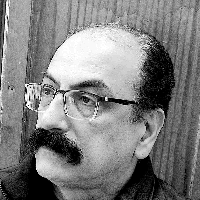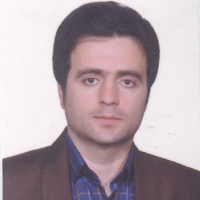The Regeneration of the Literary Illustrator Elements of the Sixth Century in the Poetic Pictures of the Eighth Century (Reproduction of Compound Techniques in the Images of the Eighth
Author(s):
Abstract:
Introduction
In the sixth century, we observed a dramatic and radical transformation in the field of art, to the extent that the first sparkles of excellence and complexity in the art of the Islamic era are observed during this period. This case has also happened to the poetry, and poetic images came out of the simple shape of Khorasani style and went in to the complexity and conceptualization. This complicated process was done by the elements and tools that have been added to the image structure over the time; elements such as compound techniques or metaphor-based art.
Methodology
This study is based on the statistical analysis and comparison between two groups of unique and compound literature techniques in 500 bits of poetry from nine poets of the Persian language from the sixth century to the eighth century.
Discussion
The artistic literary tools (discussed in this study) in the sixth century are divided into two types; that is, by parsing the poetic images of this age, we will find two types of literary elements: (1) unique techniques including rhetorical techniques such as simile, metaphor (Explicit and Personification), metonymy, and ambiguity; (2) compound techniques which are against unique techniques and in this study are used as metonymy-based arts or compound techniques, including metonymy metaphor, amphibology metaphore metonymy, and simile amphibology metaphore metonymy. This study puts emphasis on the number and frequency of these techniques in the image of poems od poets, because the presence of unique techniques in the images (with a small difference in number) is obvious and inevitable. Therefore, this study only examines the number of three expressive elements, like simile, metaphor (explicit and makniyeh), and metonymy in the image of poems; the set of these three arts; are the unique techniques.But in terms of looking at the images of the second type, the compound techniques, which are underlined by this study, and from the standpoint of stylistics, it is important to note that these arts are the combination of the unique and rhetorical elements of the first type. In terms of compound techniques, literary instruments of the first type that are considered as independent elements in the aesthetics and making of poetry are combined, and after this combination, they are not considered to be unique. An important point about the compound techniques is that ambiguity is in the center and other literary elements are around it; therefore, with the combination of expressive or alternative elements that are capable of being combined with the ambiguity, the new creation will be created that has been named ambiguity-based art. Thus, the case studies of ambiguity-based art in this research are metonymy metaphor, metonymy ambiguity metaphor, and simile ambiguity metonymy metaphor.
Conclusion
With the decomposition of the geometry of the sixth-century images, a kind of literary tools emerged that have not been revealed much before this era. These rhetorical elements are compound techniques that have an effect on the creation complexity and conceptualization of the images of Seljuk poets; this can even be seen in the poetry of Attar, whose language is simple and Khorasani. In the context of his images, the number of compound techniques is similar to the compound techniques of Nezami images and even higher Khaghani, who has a complex and Azerbaijani language. In the seventh century, poets were reluctant to take advantage of compound techniques and created complex images, and it seems that the task of transferring these literary instruments from the sixth to the eighth century is on the responsibility of Attar, and all of these elements transfer by Attar's poetry to the poets of the eighth century. In the eighth century, in contrast to the seventh century, we see natural presence and continued use of compound techniques in the creation of our images; hence, the scale of the use of these techniques in Hafez poetry reaches its highest value.Keywords:
Language:
Persian
Published:
Journal of Literary Studies, Volume:50 Issue: 2, 2017
Pages:
125 to 155
magiran.com/p1918898
دانلود و مطالعه متن این مقاله با یکی از روشهای زیر امکان پذیر است:
اشتراک شخصی
با عضویت و پرداخت آنلاین حق اشتراک یکساله به مبلغ 1,390,000ريال میتوانید 70 عنوان مطلب دانلود کنید!
اشتراک سازمانی
به کتابخانه دانشگاه یا محل کار خود پیشنهاد کنید تا اشتراک سازمانی این پایگاه را برای دسترسی نامحدود همه کاربران به متن مطالب تهیه نمایند!
توجه!
- حق عضویت دریافتی صرف حمایت از نشریات عضو و نگهداری، تکمیل و توسعه مگیران میشود.
- پرداخت حق اشتراک و دانلود مقالات اجازه بازنشر آن در سایر رسانههای چاپی و دیجیتال را به کاربر نمیدهد.
In order to view content subscription is required
Personal subscription
Subscribe magiran.com for 70 € euros via PayPal and download 70 articles during a year.
Organization subscription
Please contact us to subscribe your university or library for unlimited access!



